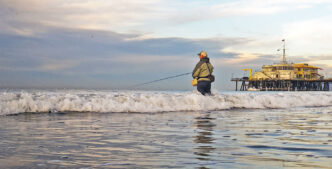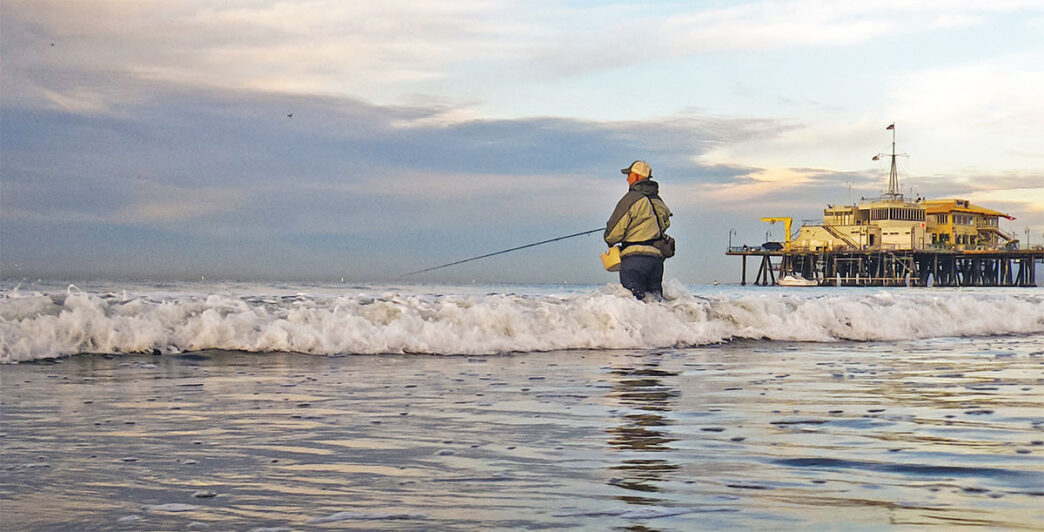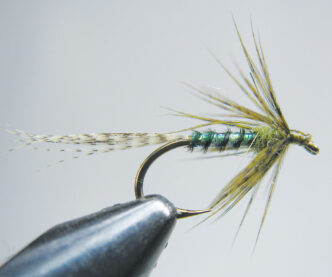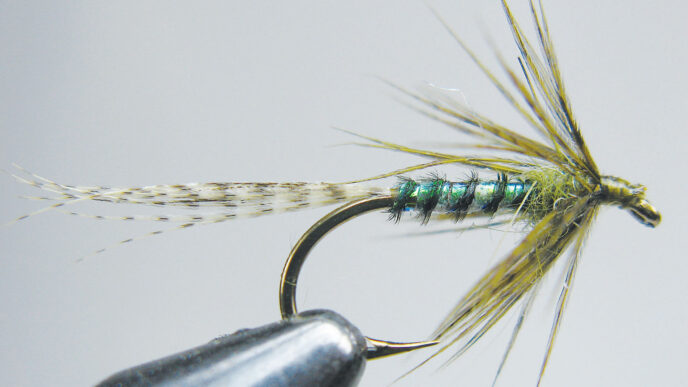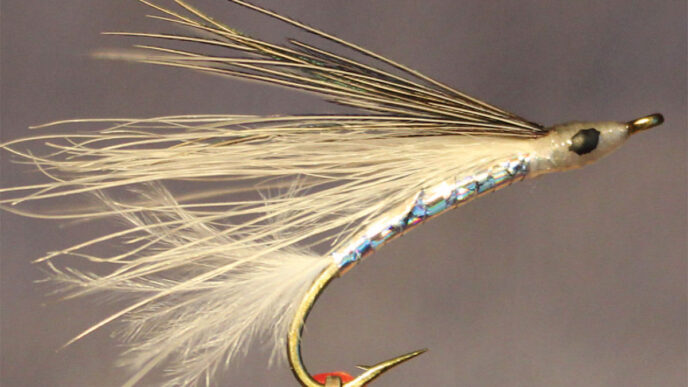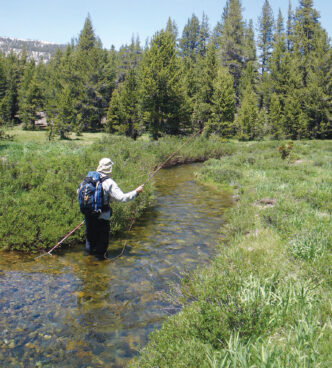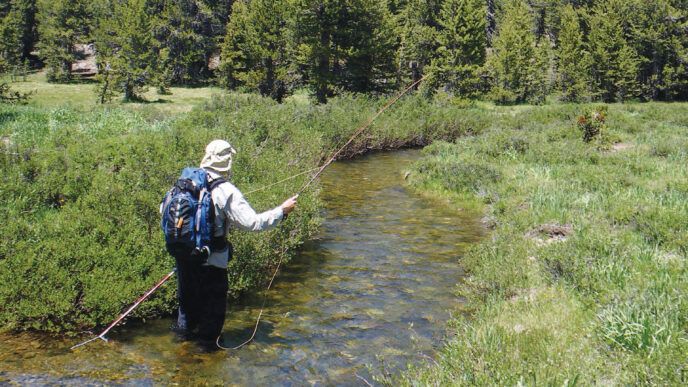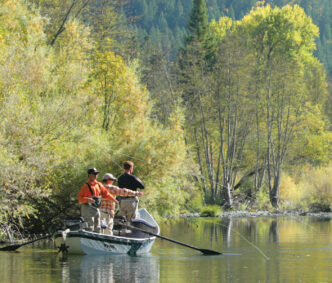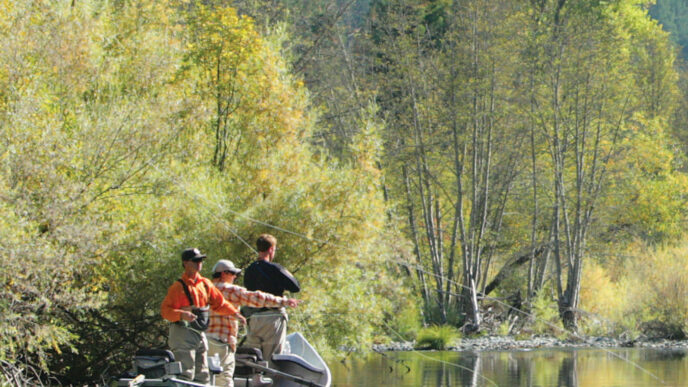It always amazes me how many fly fishers who live near the coast will drive or fly long distances to fish California’s spectacular sweetwater streams and lakes, but never venture a short distance to the big blue pond, the Pacific ocean. The surf is one of the most enjoyable and most easily accessible fisheries that fly fishers have in California. It is a great way to practice your casting and keep you tuned up for any exotic fishing adventure you may have planned. There are many surf-zone species willing to eat a fly. Fishing for them doesn’t require a lot of fancy equipment or a boat. You can do it yourself on terra firma, with a handful of flies, a pair of waders, a fly rod and reel, a stripping basket, and a good attitude. A few tips will help you get started on your new adventure at the beach with fly rod in hand.
Think of it as Fly Fishing the Surf 101.
Tackle
A 7-weight or 8-weight fly rod will be perfect for most situations in the California surf when the conditions favor a fly rod. Of course, there are exceptions: when the surf is up, you need a heavier rod to throw big flies or use heavier sinking lines. However, as a beginner, I would avoid such situations and try to pick calm days to fly fish the surf. When the seas are rough, there will be strong side currents and often strong winds and quick wave intervals. Why make it hard on yourself? Choose the days when the surf is down and the time between sets is 10 or more seconds, so you can wade safely and enjoy your time in the surf.
Fly reels should be spooled with at least 150 yards of 30-pound Dacron backing. The most effective fly lines are sinking shooting heads connected to a running line. For shooting heads, T-8 or T-11 tungsten-weighted sinking heads cut back to 28 feet in length will match most 7weights or 8-weights when connected to a running line. These days, though, there are a lot of integrated shooting-head–running-line combinations available. This means the head portion and running-line section are seamlessly connected. When using a shooting-head setup, practice casting your new line to learn the amount of overhang that is optimum to make an easy forward cast. The overhang is the section of running line between your rod’s tip and the shooting head as you begin your initial cast. An overhang that is too long will make those first casts difficult.
Reels that have a sealed drag system and larger arbors tend to be popular today, but any mid arbor reel will work, as long as it has a decent drag and you religiously rinse your reel and clean your line after each surf session.
I like to use boot foot waders for surf fishing. I always have. They are easy to put on and to take off, rinse, and throw in the car. Keep a shop brush in the car to wipe off excess sand. Don’t forget a wading belt to trap air in your waders, in the event you take a spill. A waterproof jacket with pockets and Velcro cuffs will keep you dry and warm. A pair of polarized sunglasses will help you to see structure and fish and will protect your eyes from windblown sand and errant casts alike. The last major piece of important equipment you should always have is a stripping basket to hold your fly line and make casting and line management easier. It is a good idea to stretch your running line prior to beginning your fishing to avoid line tangles, which are inevitable, but should be manageable. I like to strip my line over wet sand prior to my first cast of the day, then stretch it back into my basket. The moisture lubricates the line so it shoots easily.
Don’t forget a pair of nippers, your California fishing license, and a pair of forceps. And maybe a waterproof camera for establishing bragging rights.
Flies and Leaders
Flies can be very simple, and there are many choices. Most surf flies are tied on size 4 or size 6 hooks. Use the sharpest hooks you can find. The Gamakatsu SL11-3H and Mustad Signature 34007 hooks all work well. I like to pinch down my hook barbs, because the fly will penetrate a fish’s mouth more effectively, and it makes it easier to remove the fly and release a hooked fish. Just remember, you will need to maintain constant pressure while fighting a fish so that the barbless hook does not pull out.
Flies weighted with 5/32-ounce eyes, tied Clouser style (on top of the shank, so that the hook turns over and rides upside down, not through the sand), with a little orange or red chenille for a body and a red marabou tail with a little flash, will get you off to a good start.
For a leader, use a single piece of 7-foot, 12-pound-test fluorocarbon with a Triple Surgeon’s Loop at one end that will loop to your fly line. You can always alter your leader length as conditions warrant. I like to attach all my flies with a Kreh or Nonslip Mono Loop, which adds extra action to the fly and allows it to sink faster. Alter your stripping cadence until you find the retrieve that the fish like.
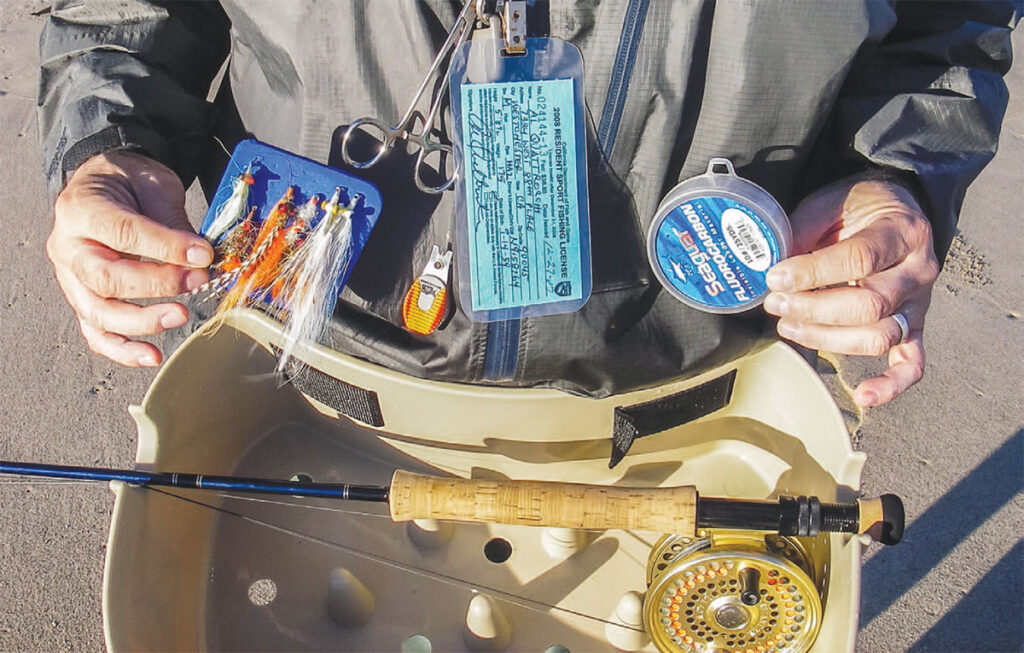
Double Haul
The double haul is one of the most important elements of the surf game and of saltwater fly fishing in general, so if you don’t know how to do it or don’t do it well, take the time to learn to double haul. Go to your local fly shop and get a lesson or have a buddy who casts well work with you. It will make the surf zone experience a lot easier and more fun, and you will catch more fish. The extra distance from a double haul will enable you to fish more water. To be a good surf fly fisher, you should be able to cast 60 feet or more. Yes, there are times when a cast of 10 feet may catch fish, but the odds will be in your favor if you can use the double haul to generate faster line speeds to cut through wind and throw longer lines.
The Belgian Casting Style
When using a sinking shooting head, it is important to roll cast the line to the surface so you can lift the entire 28 feet of shooting head out of the water. Once that’s done, the best casting stroke to employ is out to the side and over the top. This is known as the Belgian casting style. It ensures that the fly and shooting head stay away from your body when you make your forward cast — a good idea with weighted flies, sharp hooks, heavy lines, and the windy conditions you can expect at the beach.
After that initial roll cast, do one softback cast to shoot some line to create the overhang between the head and the running line, then make a forward cast that lays out the entire shooting head and the overhang in a straight line in front of you. Then, with your rod tip low to the water and using the tension of the water, lift and haul the head in a straight line out of the water. This is called a water haul. As you do the water haul, swing your back cast out to the side and higher than your head. Once your back cast straightens out, begin to make your final forward haul and then release the shooting line to complete the cast. Practice this cast before fishing so it becomes as comfortable as brushing your teeth.
Structure Is Money
Most beginners ask, “Where do you fish? The beach all looks the same!”That is a really good question. If we had X-ray vision and could see through the water, it would be easy to identify fish and locate structure, but we don’t, so we have to rely on predictive observation.
Pay attention to subtle signs so you can spend more time fishing the right places. One of the best ways to find where surf fish will hold is to go to the beach on a minus low tide and see what the beach looks like without water. Identify the troughs and holes, mark the spots by identifying landmarks for when you return, then revisit the beach during the middle of the tide or high tide and concentrate your fishing on the areas you’ve identified. Fish will use these areas as feeding lanes and lie in the deeper areas to ambush crabs and other forage items.
Structure may or may not hold fish, so keep moving until you find them. Get into the habit of fan casting and moving down the beach to cover more water. And while you’re fishing, also watch how the waves break. If an incoming wave crests in the distance, then collapses, then builds again and collapses at the shore, it most likely went over a hole or trough. Foam lines that flow out to sea and rip currents can indicate backwash currents that also hold fish. There are other ways to find fish-holding holes. Watch surfers enter the water. If they drop to their waists abruptly, it is a sign that they just stepped into a hole. After they paddle out, fish there. And pay attention to shorebirds. They know a lot more than we do about where fish and the foods that fish eat are concentrated.
Tides and Moon Cycles
Is there a right tide for fishing the surf? I think anytime you can find time to fish is the right time, but tides do play an important role in fishing, especially in the surf zone. Every beach has its own personality and secrets. Some beaches will fish better on higher tides and others on lower tides. Beach slope also plays an important role. Flat beaches may fish better on incoming tides, and steep beaches may fish better on high tides. New and full moon tide cycles produce the most water movement. Baitfish and invertebrates are subject to tidal currents, and when the tides are the strongest, more food gets pushed around and the fishing can be very productive. I like to fish along jetties on low tides, because I can reach holes I can’t reach when the tide is high.
As you go about learning the areas where you fish and the times that are most productive to fish there, keep an angling journal to record your experiences. It will help you identify patterns in different situations and will focus your angling on the best times and places to fish.
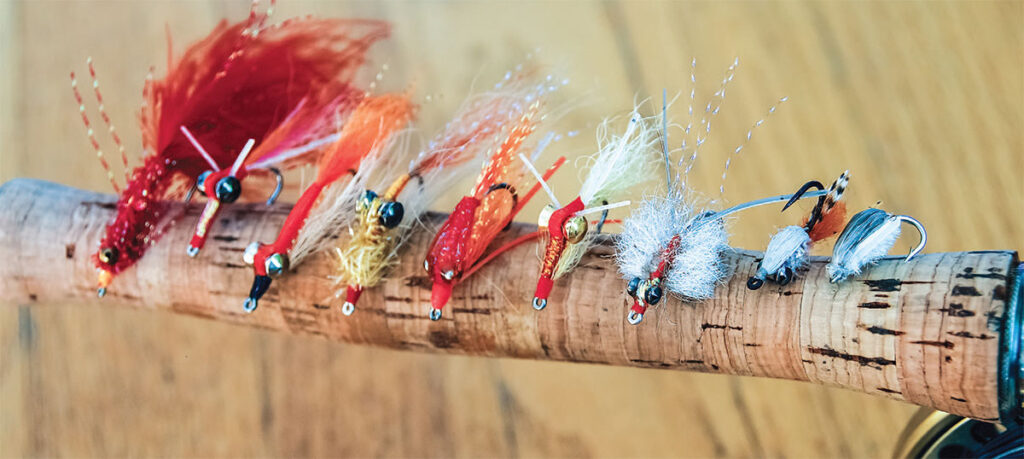
Take Only Pictures
Fly fishing the surf is not always about the fishing. It’s a beautiful place to be, and even if you’re skunked, photography can save the day, capturing a colorful sunrise or flock of pelicans hovering over the incoming waves. And sticking a waterproof camera in your vest pocket is a great way to record your finest catch of the day prior to quickly releasing it. (Be sure to spend a few minutes to revive your fish to make sure it can swim on its own and not fall prey to birds or larger fish.) I always carry some folded paper towels in a plastic bag in case my camera lens or sunglasses get sprayed by a flapping tail.
Safety Tips
The ocean can be a tough neighborhood. It demands respect, just as a raging river would. Never turn your back to the ocean while wading, especially when your attention is elsewhere, as when changing a fly. Always face seaward to keep track of the wave sets, and walk backward, looking at the ocean.
Fly fishing on California’s populated beaches also requires extra precaution so that innocent bystanders, children, and unleashed pets do not fall victim to a blind back cast. Always look over your shoulder and from side to side before launching a cast.
In the end, though, the folks with whom you’re sharing the beach are there for the same reason you are — to have fun — and that’s the best reason to get started fly fishing the surf in California.



